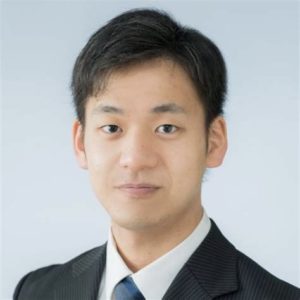 On Tuesday, July 25th 2023, we have the pleasure to welcome in SPINTEC Tomosato Hioki from University of Tokyo. will give us a seminar at 14:00, entitled :
On Tuesday, July 25th 2023, we have the pleasure to welcome in SPINTEC Tomosato Hioki from University of Tokyo. will give us a seminar at 14:00, entitled :
Coherent oscillation between phonons and magnons
Place : IRIG/SPINTEC, auditorium 445 CEA Building 10.05 (access to CEA needs pass (*))
visioconf link : https://cnrs.zoom.us/j/94708251506?pwd=aVlNSVZkZ01LVkdZcjdudklPZ1AvUT09
Meeting ID: 947 0825 1506
Passcode: xD7Kfa
Abstract : When two oscillators are coupled, once oscillation is excited on the oscillator, the amplitude is transferred to the other oscillator in time, which comes back again after the same time it took to be transferred, a phenomenon called coherent oscillation. In a magnetic material, various elementary excitations are responsible for physical properties of the material, including the excitation of lattice and magnetic order, phonons and magnons. Owing to spin-orbit and dipole- dipole interactions, phonons and magnons are coupled to each other, which could lead to the coherent oscillation between magnons and phonons if the coupling is strong enough. In this talk, the experimental direct observation of the coherent oscillation between magnons and phonons are presented, together with demonstration of anomalous reflection of magnons owing to magnon-phonon hybridization [1]. We developed time-resolved magneto-optical imaging technique by combining conventional magneto-optical imaging and pump-and-probe spectroscopy, which enables us to obtain snapshots of spin-wave propagation dynamics in real space with a temporal resolution of sub nanoseconds. In a Bi-doped magnetic garnet, Lu2Bi1Fe3.4Ga1.6O12, we observed coherent temporal oscillation between magnons and phonons as a result of hybridization, where magnons and phonons are coherently interconverted to each other during propagation. It is also found that the magnon-phonon hybridized wave exhibits abnormal reflection at the sample edge owing to the mode degree of freedom of phonons [2]. Since phonons have longitudinal and transverse modes, both modes may not be an eigenstate where translational symmetry is broken down, such as a sample edge. Owing to the mode degree of freedom, the hybridized wave may split into two reflected waves with the same frequency, which is not the case for pure magnon propagation. The experimental demonstration of these dynamics of magnon- phonon hybridized waves will be presented in the talk.
References
[1] T. Hioki, Y. Hashimoto, E. Saitoh, Commun. Phys. 5, 115 (2022)
[2] T. Hioki, Y. Hashimoto, E. Saitoh, Commun. Phys. 3, 188 (2020)
Tomosato Hioki : Department of Applied Physics, The University of Tokyo, Japan
Advanced Institute for Materials research, Tohoku University, Japan
(*) Persons who do not have a CEA badge must request an entry authorization sufficiently in advance, before July 14th at admin.spintec@cea.fr




